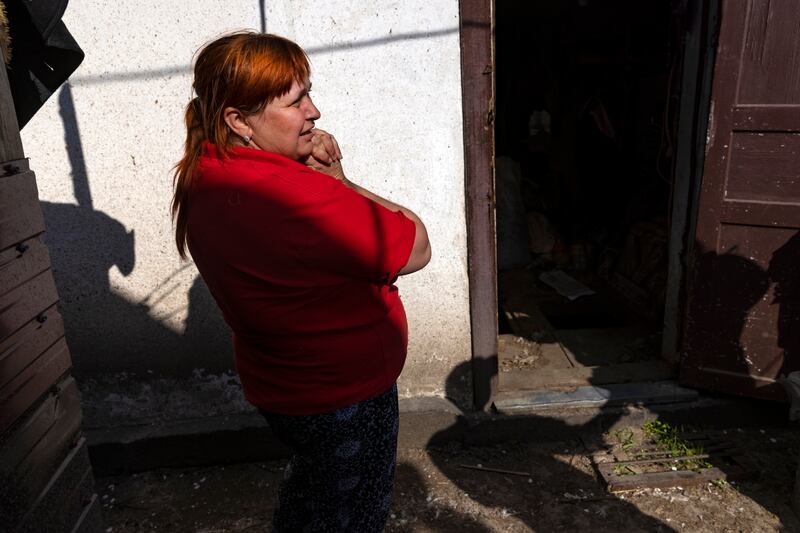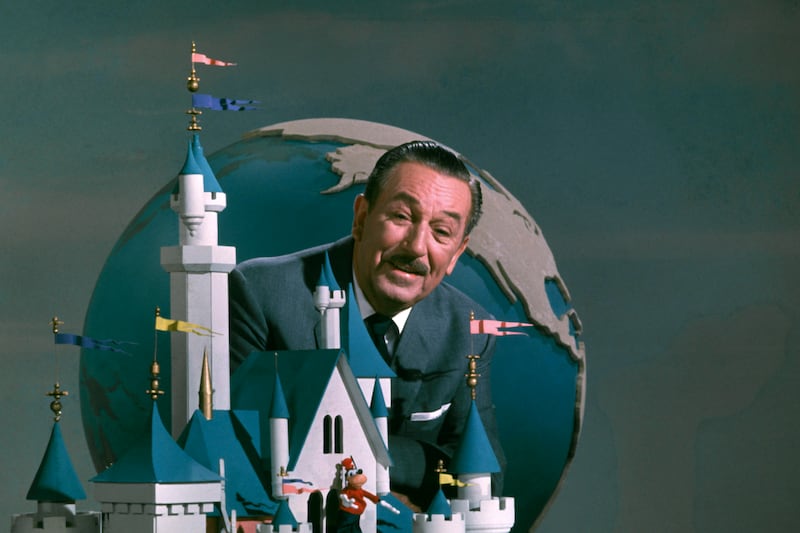It was Yulia Hrebnyeva’s fastidiousness that saved the lives of her family.
First, she sent her husband outside to fix the lock on the door of their house. Then she brought her children down to the basement, insisting that they help her tidy the space where they had been sleeping every night to avoid the Russian missile attacks.
And that’s when a Russian Su-34 fighter plane crashed through the roof of their two-story home.
A few blocks away, Vitaliy Serhienko was not so fortunate. The pilot of the downed Russian plane had ejected. Serhienko and his brother-in-law, Serhiy Tkachenko, heard footsteps on their roof, and went out to investigate. “We wanted to catch him,” Tkachenko said.
RM Block
The two men were approaching the source of the noise from opposite directions when Tkachenko heard gunfire. The pilot had shot Serhienko in the chest; he died in his own chicken coop.
Tragedy and serendipity are dispensed randomly in war, and on March 5th, when a Russian plane fell from the sky, they produced two very different results in Chernihiv, a city in Ukraine’s north. One family lived, almost miraculously, while Serhienko, in the wrong place at the wrong time, ended up dead.
There was an added element in the equation: The Russian pilot did not have the chance to drop his bombs.
“If these bombs had fallen on Chernihiv, there would be so many more victims,” Hrebnyeva said as she surveyed the wreckage still in her yard more than two months after the crash. “Our house stopped it.”

Serhienko’s sister, Svitlana Voyteshenko, buried him the next day. “He was such a good man, he worked hard,” she said. “Everyone liked him.’’
The crash claimed yet another life when the flames spread to a house across the yard from Hrebnyeva and an elderly, bedridden man was burned to death.
Chernihiv, located about 65km from Belarus and about 90km from Russia, was quickly surrounded at the start of the war, besieged by Russian troops invading from both sides. The attacks were fierce. Russian forces intentionally bombed critical infrastructure such as water and electricity stations, as well as food storage, said Oleksandr A Lomako, head of the Cherhiniv City Council, but never gained full control of the city centre.
Lomako said that prosecutors had recorded 350 people killed as a result of missile strikes, and he estimated that another 700 had died of causes related to the siege: lack of electricity, water, and food.
The outrage at the devastation and death that Russia had inflicted was simmering among residents when the pilot catapulted out of the plane. Members of Chernihiv’s Territorial Defense, a volunteer army unit, heard the explosion, said one soldier, Ivan Lut. He raced to where he thought the pilot might land, saw the orange and white parachute hanging over the house and began his own chase, he said.
The pursuit ended next door to Tkachenko’s home when the Russian pilot, named in an intelligence investigation as Maj Alexander Krasnoyartsev, was apprehended.
His face and chest were covered in blood. Flat on his back on the ground, he raised his arms, begging, “Don’t shoot, I surrender!” according to video footage shot on a Ukrainian soldier’s mobile phone.


Soon, a crowd gathered, some looking for revenge. “We had to fight with our own guys to save his life,” Lut said, noting that soldiers had been given orders that the pilot be captured alive. The co-pilot was already dead when the soldiers found him.
The remnants of the plane, a supersonic midrange bomber aircraft, are scattered across Hrebnyeva’s yard. She pointed out the remains of a sauna and a small swimming pool nearby. Tulips peeked out from the metal wreckage of the plane. Hrebnyeva was walking over to the burned stub of a tree when she saw something amid the rubble: a tiny pair of jeans belonging to her six-year-old son, still folded tidily, even though the drawer that once contained them was unrecognisable. There was more: a pair of red shorts with the waistband intact but the back burned out; a tiny swimsuit; the sportswear of her 10-year-old, Denys.
“I almost want to take it home and wash and iron it,” she said. She had come home that Saturday morning from a shift organising supplies for the soldiers defending the city. She bought a lock at the hardware store across the street. Her husband, Rostyslav, was in the kitchen boiling dumplings for their three children and another child who had been separated from her parents after Chernihiv was attacked on the first day of the war.
Yulia Hrebnyeva’s husband cursed playfully when she sent him outside to install the new lock, she said. She took the children down to the basement to clean.
And then they heard crumbling. “The bricks were just pouring down,” she said. “Everything started to shake.” She thought that she had heard shooting, she added, but it was the roof shingles coming undone.
Her husband, a retired military pilot, sustained burns on his hands and face, but was able to get help to pull her and the four children out of the basement.
“If my husband had not opened the door, we would have been burned alive,” Hrebnyeva said.
From a military standpoint, the destruction of the plane was a sign of Ukraine’s success in keeping Russia from gaining air superiority. Before the full-scale invasion began, it was widely believed that Russia could subdue the Ukrainian air force in a matter of days and establish control over the skies. But Ukraine has been able to shoot down at least 25 Russian warplanes, according to the military analysis site Oryx. More than one-third of those were destroyed over several days in early March, many by shoulder-fired portable surface-to-air missiles.
Russia’s pilots were flying low to avoid Ukraine’s missile systems, said Justin Bronk of the Royal United Services Institute, a military research organisation in London.
The aircraft that crashed March 5th was among about eight or nine others shot down in a period of several days. That loss rate convinced Russian commanders that flying low during the daytime would be unsustainable, forcing pilots to fly at night, when darkness makes it much harder for Ukraine to use surface-to-air missiles effectively, Bronk said.

On this flight, Ukraine’s military was able to shoot down the warplane before it dropped all its weapons: images of the same type of aircraft taking off the next day, published by the Russian defence ministry, showed that it had been carrying at least eight unguided 500kg bombs.
Lut said that the pilot told them that he had only received the targets for the missile strikes while he was in the air, and that he was unaware they were hitting civilian objectives.
Voyteshenko, whose brother was killed in the chicken coop, said that the pilot looked her in the eyes and told her that he had not realised civilians were living there.
Did she believe him? “Of course not,” she said.
As she stood next to the site where her brother was killed, Voyteshenko looked at an apple tree planted by her parents. She and her brother had picked its fruit together since they were children.
Her brother had started installing insulation and redoing the facade of their house last fall.
“Now I don’t know if we will be able to complete it,” she said. – This article originally appeared in The New York Times.


















